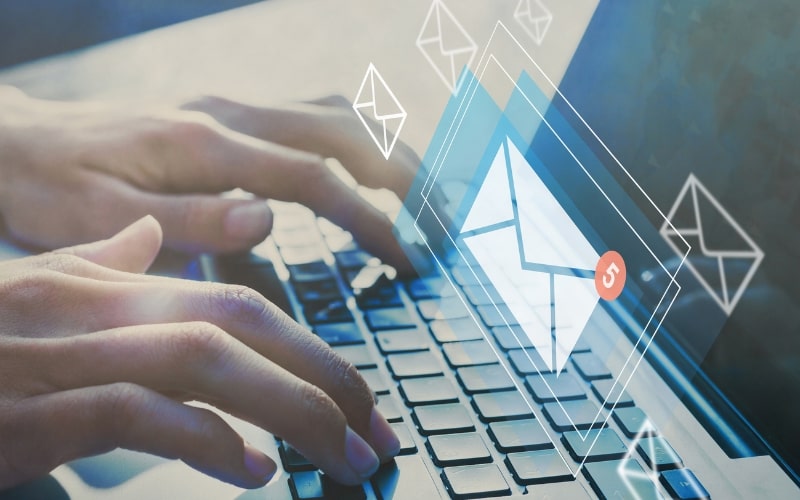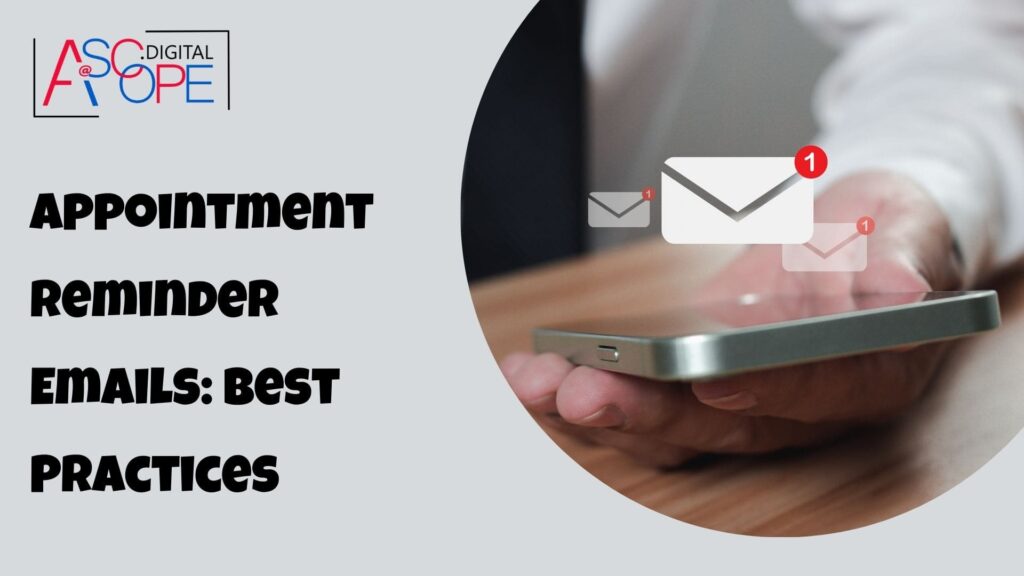In today’s busy world, patients often forget their medical appointments, leading to no-shows that waste valuable time and resources. Appointment reminder emails are a powerful tool that healthcare providers can use to reduce no-shows and enhance patient engagement. This blog will explore the best practices for creating and sending effective appointment reminder emails tailored to the healthcare industry.
Importance of Appointment Reminder Emails

Appointment reminder emails are essential for several reasons:
- Reducing No-Shows: These emails significantly lower the rate of missed appointments, saving time and resources.
- Enhancing Patient Engagement: Regular communication helps build a stronger relationship between patients and healthcare providers.
- Improving Efficiency: By reducing no-shows, healthcare providers can manage their schedules more effectively and ensure optimal resource utilization.
Timing Your Appointment Reminders
The timing of your reminder emails is crucial for their effectiveness. Here are some guidelines:
- Initial Reminder: Send the first reminder one week before the appointment. This gives patients enough time to adjust their schedules if needed.
- Follow-Up Reminders: Send follow-up reminders two days before and one day before the appointment to keep it fresh in the patient’s mind.
Crafting an Engaging Subject Line
The subject line is the first thing patients see, and it determines whether they open the email. Here are some tips:
- Keep It Short and Clear: Aim for subject lines under 50 characters. Example: “Reminder: Your Appointment on [Date].”
- Use Personalization: Include the patient’s name to increase open rates. Example: “John, Don’t Forget Your Appointment on [Date].”
- Create Urgency: Use phrases like “Upcoming Appointment” or “Important Reminder” to prompt immediate action.
Personalization and Customization
Personalizing the content of your emails can significantly improve their effectiveness:
- Include Patient’s Name: Address the patient by their name in the greeting.
- Specific Appointment Details: Clearly state the date, time, and location of the appointment.
- Provide Relevant Information: Include the doctor’s name, any preparation instructions, and contact details for questions.
Clear and Concise Content
The body of your reminder email should be easy to read and straight to the point:
- Greeting: Start with a friendly greeting using the patient’s name.
- Appointment Details: Highlight the appointment details prominently.
- Call to Action: Encourage patients to confirm or reschedule if necessary.
- Additional Information: Include any preparation instructions or documents needed.
- Contact Information: Provide a phone number or email for questions or rescheduling.
Mobile-Friendly Design
With many emails opened on mobile devices, it’s essential to ensure your reminder emails are mobile-friendly:
- Responsive Design: Use a responsive email template that adjusts to different screen sizes.
- Simple Layout: Keep the layout clean and uncluttered.
- Easy Navigation: Ensure links and buttons are easily clickable on smaller screens.
Incorporating Visuals
Visual elements can enhance the readability and engagement of your emails:
- Logo and Branding: Include your clinic’s logo and brand colors for a professional look.
- Icons and Images: Use icons for phone numbers, maps for location, and images of the clinic or doctors.
- Whitespace: Use whitespace effectively to avoid a crowded appearance.
Compliance with HIPAA
Healthcare providers must ensure that all communication complies with HIPAA:
- Secure Email Systems: Use secure email systems to protect patient information.
- Minimal Personal Information: Avoid including sensitive personal information in the email.
- Patient Consent: Ensure you have the patient’s consent to send reminder emails.
Offering Rescheduling Options
Life happens, and sometimes patients need to reschedule. Make it easy for them:
- Rescheduling Links: Include a link or button for patients to reschedule online.
- Contact Information: Provide a phone number or email address for rescheduling.
- Flexibility: Offer flexible rescheduling options to accommodate patients’ needs.
Testing and Optimization

Regular testing and optimization can help improve the effectiveness of your reminder emails:
- A/B Testing: Test different subject lines, email templates, and send times to see what works best.
- Monitor Metrics: Track open rates, click-through rates, and appointment confirmations to measure success.
- Patient Feedback: Encourage patients to provide feedback on the reminder emails and use it to make improvements.
Incorporating SMS Reminders
While email reminders are effective, incorporating SMS reminders can further reduce no-shows:
- Dual Reminders: Send both email and SMS reminders for critical appointments.
- Short and Sweet: Keep SMS reminders concise, focusing on the essential details.
- Opt-In: Ensure patients opt-in to receive SMS reminders to comply with regulations.
Example Templates
Here are some example templates to guide your reminder emails:
Example 1: Simple Reminder
Subject Line: Don’t Forget Your Appointment on [Date]
Email Body:
Example 2: Detailed Reminder
Subject Line: Reminder: Appointment with [Doctor’s Name] on [Date]
Email Body:
P.S. You can find parking information and a map to our clinic here.
Addressing Common Challenges
Healthcare providers may face challenges when implementing appointment reminder emails. Here’s how to address some common issues:
Email Deliverability:
- Ensure Accuracy: Verify patient email addresses at the time of appointment booking.
- Avoid Spam Filters: Use a reputable email service provider and avoid spammy words in your subject lines.
Patient Preferences:
- Customization: Allow patients to choose their preferred communication method (email, SMS, phone call).
- Frequency: Be mindful of the frequency of reminders to avoid overwhelming patients.
Technical Issues:
- System Integration: Ensure your email reminder system integrates smoothly with your appointment scheduling software.
- Backup Plans: Have a backup communication method in case of system failures.
Case Studies and Success Stories
Sharing success stories and case studies can demonstrate the effectiveness of appointment reminder emails:
Case Study 1: Reducing No-Shows A community health center implemented a series of appointment reminder emails, resulting in a 30% reduction in no-shows. By sending reminders one week, two days, and one day before appointments, they saw significant improvements in attendance rates.
Case Study 2: Improving Patient Engagement A dental clinic enhanced patient engagement by personalizing reminder emails. Patients appreciated the clear communication and additional preparation instructions, leading to positive feedback and higher patient satisfaction.
Effective Appointment Reminder Emails: Boosting Traffic and Sales for Your Website
Incorporating best practices for appointment reminder emails can significantly enhance your website’s traffic and sales. Timely reminders ensure that your clients remember their appointments, reducing no-shows and fostering a reliable customer base. Personalized messages, clear call-to-actions, and engaging content make these reminders more effective. Moreover, incorporating links to relevant content or special offers in your reminder emails can drive traffic back to your website. Thus, improving traffic and sales for your website. Read more on the other reasons why your website isn’t getting traffic. By optimizing your appointment reminder emails, you not only enhance customer experience but also leverage a powerful tool to boost your online presence and conversion rates
1Conclusion
Appointment reminder emails are a valuable tool in healthcare email marketing. By following these best practices, healthcare providers can reduce no-shows, improve patient engagement, and ensure efficient operations. Personalization, timing, clear content, and compliance with regulations are key factors in crafting effective reminder emails. Additionally, incorporating SMS reminders and offering rescheduling options can further enhance their effectiveness. By continuously testing and optimizing your approach, you can create a seamless experience for your patients, ultimately leading to better healthcare outcomes.
Implementing these strategies will not only streamline your appointment process but also foster a stronger relationship with your patients, ensuring they receive the care they need promptly and efficiently.


